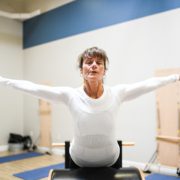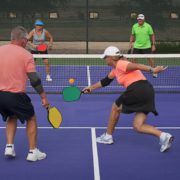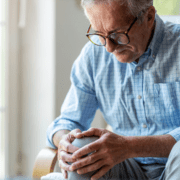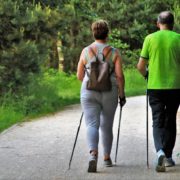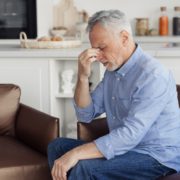Why We Age Faster Than We Should – And How Medicine 3.0 Changes Everything
Why We Age Faster Than We Should — And How Medicine 3.0 Changes Everything (Portsmouth, NH)
If you haven’t yet read “Outlive: The Science and Art of Longevity” by Dr. Peter Attia, I highly recommend it—especially if living your healthiest years right now matters to you. Dr. Attia, a physician known for his work in healthspan and preventative medicine, explains why our current medical system (what he calls Medicine 2.0) focuses too heavily on treating disease instead of preventing it.
In “Outlive,” Attia introduces Medicine 3.0, a proactive and prevention-based approach to longevity. Instead of waiting for disease to show up, Medicine 3.0 focuses on early action, long-term strategy, and building the physical capacity needed to stay healthy and independent through your 60s, 70s, and beyond.
Central to Attia’s philosophy are the “Four Horsemen” of chronic disease:
- metabolic dysfunction
- cardiovascular disease
- cancer
- neurodegenerative decline
These conditions often appear in our 50s and 60s—but the biological changes that cause them begin years (often decades) earlier. That’s why the most powerful time to intervene is long before symptoms appear. And that applies directly to the work I do every day as a mechanical pain specialist here in Portsmouth, NH.
Where Most People Overlook Longevity: Musculoskeletal Health
You can fuel your body with nutrient-dense food, build strong muscles, and improve your cardiovascular capacity—but if you’re dealing with chronic back pain, knee pain, hip pain, or shoulder pain, it becomes nearly impossible to maintain the type of movement needed for long-term health.
Just like the Four Horsemen, musculoskeletal problems usually develop silently from small mechanical issues that go unaddressed for too long. When identified early, nearly all of these issues are fixable—and often preventable.
This is exactly where Medicine 3.0 and mechanical pain science overlap:
- early intervention
- optimizing function
- preventing decline
- treating problems while they’re small—not after they become debilitating
Below are five Medicine 3.0 principles that apply directly to your muscles, joints, and mobility.
1. Movement Quality Matters More Than You Think
Longevity isn’t just about being active—it’s about moving well. Poor movement patterns, stiffness, or instability eventually lead to breakdown, even if you’re exercising consistently.
- Medicine 2.0: Wait until something hurts
- Medicine 3.0: Optimize movement before pain appears
- Good joint mobility, core stability, balance, and coordination are fundamental for long-term health, independence, and injury prevention.
2. Small Aches Become Big Ones When Ignored
A tight low back after sitting…
An achy knee after pickleball…
A stiff neck when you wake up…
These are early warning signs. Medicine 2.0 teaches you to ignore them until they become severe. But by that point, the problem is harder—and more expensive—to solve.
Mechanical issues are easiest to fix early, and addressing them now protects your joints, prevents chronic pain, and helps you stay active well into older age.
3. Your Mobility Declines Long Before You Notice It
Just like cardiovascular decline, mobility fades slowly over decades. You lose hip extension, ankle mobility, rotational strength, and postural control long before you notice anything in daily life.
The good news?
Mobility is highly trainable, even into your 70s and 80s.
The key is to address restrictions early—not once you already “feel old” or start modifying activities due to stiffness.
4. Strength Training Doesn’t Work When Form Is Poor
Strength training is one of Attia’s non-negotiables for longevity. But strength training performed with poor mechanics can do more harm than good.
Learning to:
- hinge properly
- stabilize your hips
- engage your core
- align your spine
…keeps your joints safe and allows you to build strength without injury.
The best time to learn proper mechanics is before something breaks down—not after you’re dealing with a herniated disc or chronic tendon pain.
5. Imaging Shows Structure—But Not the Full Story of YOU
X-rays and MRIs show bones and tissues, but they don’t show mechanical dysfunction, such as why:
- your back hurts more with sitting
- your hip improves with walking
- your knee flares after lifting
Most musculoskeletal pain is mechanical in nature, meaning it responds best to mechanical solutions like movement, load management, and corrective exercise—not just medication or rest.
This aligns perfectly with Medicine 3.0:
Treat the whole person, not just the scan.
The Bottom Line: You Have More Control Over Your Future Than You Think
Medicine 3.0 teaches us that aging isn’t something that just “happens”—it’s something we can influence with early, strategic action.
Nowhere is this more true than in your musculoskeletal system.
When you:
✔ take small signals seriously
✔ strengthen intelligently
✔ move with intention
✔ address problems early
✔ ask for help before pain becomes disabling
…you protect your ability to stay healthy, active, independent, and fully engaged in life for decades to come.
About Dr. Carrie Jose
Dr. Carrie Jose, DPT, is a Physical Therapy Specialist and Mechanical Pain Expert and the owner of CJ Physical Therapy & Pilates in Portsmouth, NH. She writes for Seacoast Media Group and helps active adults stay mobile and pain-free without medications, imaging, or surgery.
To get in touch or request a discovery visit, visit cjphysicaltherapy.com or call 603-380-7902.

